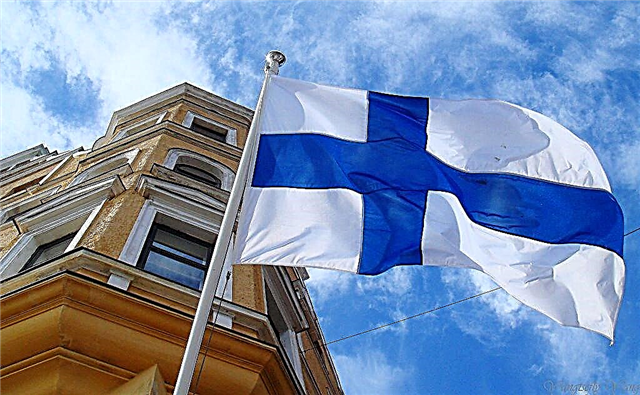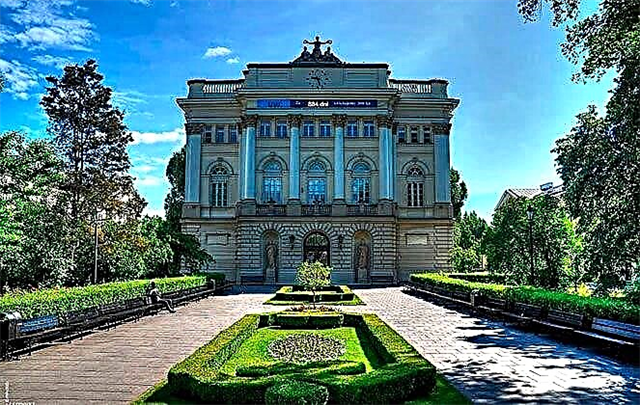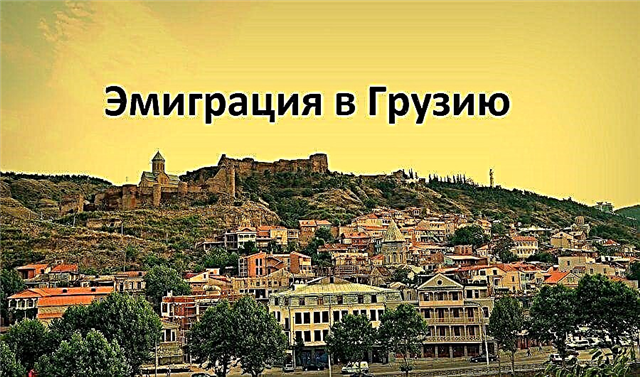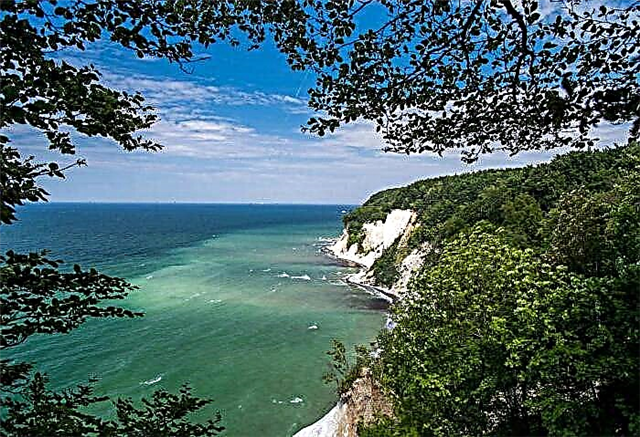National parks and reserves in Germany are an integral part of ecotourism. On the territory of Germany, there are 16 active nature protection zones covering more than 1 million hectares. In addition to endless wild forests, amazing beaches and virgin fields, local landscapes can surprise with rare animals and plants of extraordinary beauty. All this makes ecotourism a popular destination for recreation and entertainment in Germany.

What are national parks and reserves in Germany
There is a difference between the concept of national parks and reserves. In fact, these are nature conservation areas that are designed to limit human intervention and preserve the uniqueness of the natural complex in the natural environment. Here ecological systems are presented for educational purposes to protect plants and animals from negative impacts. The difference between them lies in the level of access to individual sites for visitors.
In the national park, almost the entire territory is open to tourists.
For the organization of the route, parking lots, paths, recreational areas, etc. are provided, which make the excursion comfortable.
In the reserves, walks are also allowed, but in strictly designated places. In fact, ecotourism here is territorially limited and local, but this does not prevent visitors from fully enjoying the picturesque local landscapes.
Overview of national parks and reserves in Germany
The landscapes of Germany are unique, therefore, in order to preserve biodiversity, rare or endangered species of plants and animals, some lands are protected from tourists. As of 2021, 16 national parks and reserves have been organized in the country, in addition, the recreational zone includes the North and Baltic Seas (2 thousand km2), which occupy 0.6% of the land area of the state.
Notable protected areas include:
- Bavarian Forest (Bayerischer Wald);
- Berchtesgaden
- Harz (Harz);
- Lower Saxon watts (Niedersächsisches Wattenmeer);
- Saxon Switzerland (Sächsische Schweiz);
- Black Forest (Schwarzwald);
- Schleswig-Holsteinisches Wattenmeer;
- Jasmund.
The nature conservation area of Germany covers 3% of all land, and includes not only forests and mountains, but also water bodies, as well as islands.
Bavarian forest - a picturesque biosphere reserve
The Bavarian Forest (German Bayerischer Wald) is the oldest national park in southeastern Germany and one of the largest ecosystems, 90 km long. Located in the vicinity of Freyung-Grafenau. It features a unique landscape and picturesque landscapes.
Together with the Šumava National Park in the Czech Republic, the Bavarian Forest forms the largest mixed forest reserve in Central Europe.
Here nature develops according to its own laws. The ecosystem includes mountains with forests, swamps, streams and pastures with abundant biodiversity. More than 14 thousand species of animals live in the Bavarian Forest, which is about 22% of the living creatures of the country.
Various conservation programs are being implemented to protect flora and fauna. The biodiversity of the Bavarian Forest now includes:
- lynx;
- peregrine falcons;
- wolves;
- otters;
- beavers;
- wood grouse;
- woodpeckers and many others.
Thousands of species of birds, insects and mushrooms were found in the vicinity. The reserve staff are making efforts to preserve the ecosystem in its original form.
The total area of the territory is 24 thousand hectares. Since 1970 the Bavarian Forest is a protected area. Located at Freyunger Straße 2. You can get here from Munich or Düsseldorf by bus, train and car.
Berchtesgaden - mountain park in the Alps
Berchtesgaden (German Berchtesgaden) is a high-mountain reserve located near Munich, in the vicinity of the Bavarian Alps. Covers an area of 20.8 hectares. The main attraction is the Königssee fjord lake and the Watzmann mountain (2712 m). In 1978, the Berchtesgaden National Park was formed on this territory. Here you can see magnificent alpine meadows, coniferous forests and rocky landscapes.

The fauna is diverse and corresponds to the characteristics of the region. The park is inhabited by:
- roe deer;
- deer;
- hares;
- golden eagles;
- mountain goats;
- partridges;
- wood grouse.
In the park, there are more than a hundred species of fish, amphibians and perching, including salamander, copperhead, trout, which are on the verge of extinction in the world. It is also home to many insects.
The flora is represented by conifers and mountain bushes. Berchtesgaden is located at Berchtesgadener Str., 91. You can get here from Munich or Salzburg.
Schleswig-Holstein Watts - amazing coastal landscape
Schleswig-Holsteinisches Wattenmeer (German Schleswig-Holsteinisches Wattenmeer) is the largest nature reserve in Germany, which covers an area of 442 thousand. It is located on the coast of the Wadden Sea, which consists of shoals that are exposed during low tides and are completely flooded by tides.
Almost 70% of the park's lands are covered with water, the remaining 30% are periodically immersed in it.
This was reflected in the ecosystem of the reserve, where meadows, dunes and deserts predominate. Since 1985, Schleswig-Holstein Watt has been recognized as a national park, and since 1990 it is considered a biosphere reserve and included in the list of UNESCO sites.
The reserve is conditionally divided into 2 zones:
- 1 - protected area, which is closed for visits;
- 2 - the buffer part, which is used for tourism and economic activities.
Flowers and grasses are found in saline meadows. The main part of the animal world is represented by seals, porpoises and fur seals.
By the number of birds, Schleswig-Holstein Watts are considered the most “populated” region in Europe. The waters of the Wadden Sea are home to fish, molluscs and crustaceans. Due to the high humidity of the area, a large population of insects is concentrated here. The easiest way to get to the park is to take the train from Hamburg or Bremen to Tenning.
Harz - the virgin nature of Saxony
Harz (German Harz) is a national park located in Lower Saxony. It was formed in 1990 and covers an area of 24 thousand. The complex of the nature protection zone includes the Brocken mountain (1 142 m) and the central part of the Harz massif. The fauna and flora of the reserve correspond to the characteristics of the region.
Here you can meet roe deer, deer, wild boars, lynxes, wild cats. The park is home to rare species of birds, in particular the black woodpecker.
More than 90% of the territory is occupied by coniferous forests and valleys. The rest is swamps, rocky slopes, hills.
Located at Lindenallee 35 in Wernigerode. You can get here from Berlin or Hanover by train or bus.
Lower Saxon watts - beautiful sea views
The Lower Saxon Watts (German: Niedersächsisches Wattenmeer) is a national park formed in 1986 in the vicinity of Lower Saxony. Covers an area of 345 thousand hectares.
Since 1993, the Lower Saxon Watt is a UNESCO site and is recognized as a biosphere reserve.
The peculiarity of the protected area is the North Sea watt-shallows, which partially flood the land. The landscape of the region is represented by saline meadows, swamps and forests.
Here you can see dam-making beavers, otters, muskrats and other animals. The Lower Saxon Watt is characterized by a large number of birds that fly here to nest.
The local flora is very rich. In addition to grasses, shrubs and flowers, you can find different types of marsh and marine plants here.

The reserve is located at Virchow str., 1; can be reached from Munich and Berlin by car or public transport.
Saxon Switzerland - an authentic nature complex
Saxon Switzerland (German Sächsische Schweiz) is a nature reserve on the territory of the Germanic lands of the same name, which covers an area of 93.5 thousand sq.It was officially approved in the status of a reserve in 1990, although attempts to create a biosphere zone were made back in 1850, when the park received the status of nature conservation.
Only 37% of the land is open to tourists. Lovers of solitude with nature will definitely like it here.
The fauna is represented by many unique animals and birds:
- wild boars;
- deer;
- martens;
- vipers;
- owls;
- hawks;
- black storks, etc.
The inviolable area occupies 2/3 of the main natural reserve.
The main attraction of the region is the Königstein Fortress (German: Festung Königstein) - a medieval Czech architectural complex, now a museum. You can get here from Dresden by car or bus. More information can be found in the article “Saxon Switzerland and the Königstein Fortress”.
Black Forest - magnificent forest landscape
The Black Forest (German Schwarzwald) is a nature conservation complex on the territory of the mountain range of the same name in the vicinity of Baden-Württemberg. Popular tourist area due to its proximity to the popular holiday resorts of Baden-Baden and Badenweiler. Since 2021, it is a protected area, covering an area of 10 thousand hectares.
The main attraction of the Black Forest is a dense coniferous-beech forest, where various representatives of flora and fauna live.
More than 200 species of birds live here, in particular, wood grouse, chaffinch, bullfinch, hawk, etc. The ecosystem is rich in insects and rodents. Deer and roe deer can be found among the animals.
The easiest way to get to the Black Forest is via Velbert and Baden-Baden. You can also get there from Cologne by car or public transport.
Jasmund - ancient chalk coast
Jasmund (German Jasmund) is a national park on the territory of Mecklenburg-Western Pomerania, formed in 1990. The total area is only 3 thousand hectares, but hundreds of species of birds, animals and plants live here.
The main attraction of Yasmund is the chalk cliffs, where centuries-old fossils have been preserved. The most famous of them is the "Royal Chair" (German Königsstuhl).
Local forests have an attraction - hollow bogs. These are depressions formed as a result of breaking ice.
The fauna of Yasmund is diverse and unique. There are many trees in the park, among them alder, pear, yew, apple, etc. Swallows, owls, peregrine falcons, eagles and other species of birds nest on them.
You can get to Jasmund from Berlin and Binz.
Other national parks and reserves in Germany
In addition to large nature conservation complexes, there are recreational areas in Germany, which are also among the protected areas. These include:
- Müritz (German Müritz) - endless lake in Mecklenburg-Vorpommern;
Find out more about relaxing in this unique area from the material “Lake Müritz”.
- Hamburg Wadden Sea (German: Hamburgisches Wattenmeer) - a natural attraction near the Elbe;
- Lower Oder Valley (German Unteres Odertal) - magnificent flooded meadows in the vicinity of Brandenburg;
- Near-Pomeranian lagoons (German: Vorpommersche Boddenlandschaft) - magnificent landscapes of the Baltic Sea;
- Hainich (German Hainich) - a green park in Thuringia;
- Eifel (German: Eifel) - a unique eco-complex in the region of North Rhine-Westphalia;
- Kellerwald-Edersee (German Kellerwald-Edersee) - nature reserve in Northern Hesse:
- Hunsrück-Hochwald (German Hunsrück-Hochwald) - green landscapes in the Rhineland-Palatinate and the Saarland.
Lovers of picturesque natural attractions can also visit small landscape and park complexes in Germany. These include:
- Olympic Park - a park area in Munich;
- Wilhelmshohe Mountain Park - an artificial museum complex in Hesse-Kassel;
- landscape park Duisburg Nord - a natural and architectural area in Duisburg;
- Rosenche Park in Darmstadt, a protected area in Hesse;
- Bochum Geological Park - a unique monument in the city of the same name;
- Sanssouci Park - the central attraction of Postdam;
- Kromlau - forested area where the popular bridge is located, creating a perfect circle with its own reflection on the water;
- Tiergarten - one of the parks in Berlin over the river Spree;
- Ludwigsburg is an architectural ensemble in the city of the same name.
Conclusion
The nature of Germany is unique and unrepeatable. Local landscapes and landscapes can surprise even the most sophisticated tourists. Due to the peculiarities of the geographical location, the national parks and reserves of the country include the largest biodiversity of the territories of Europe.
Despite the fact that not every biosphere complex has an official website in Russian, this does not prevent tourists from Russia from visiting German reserves every year to enjoy their splendor and beauty.











